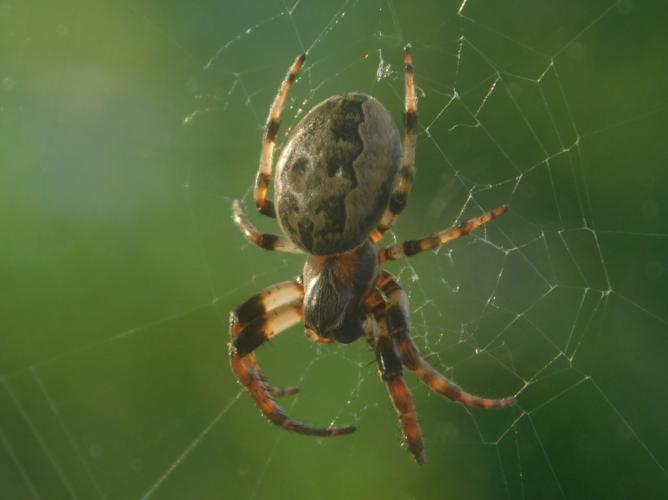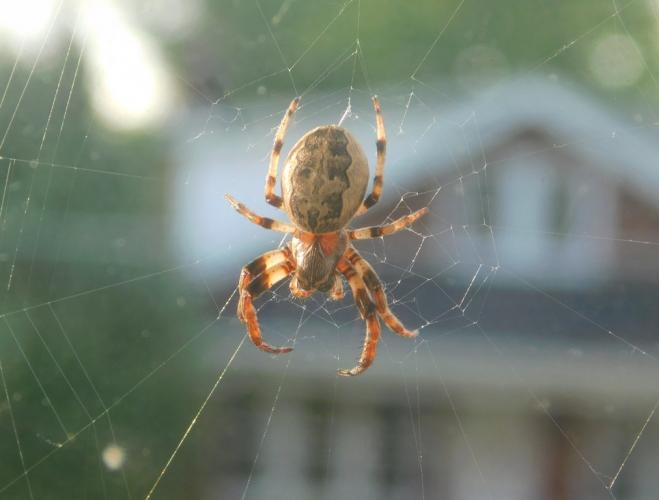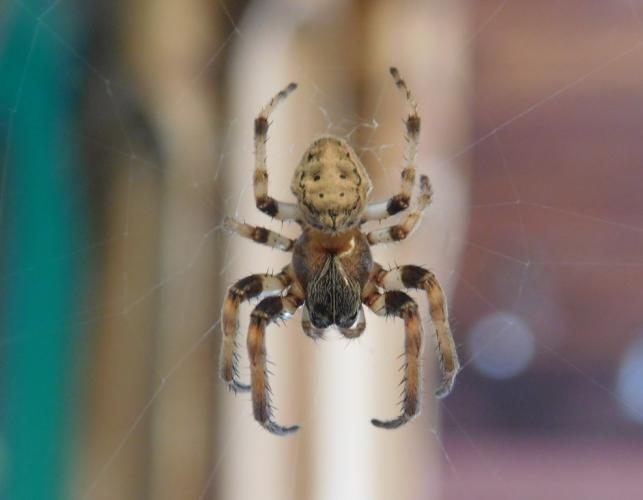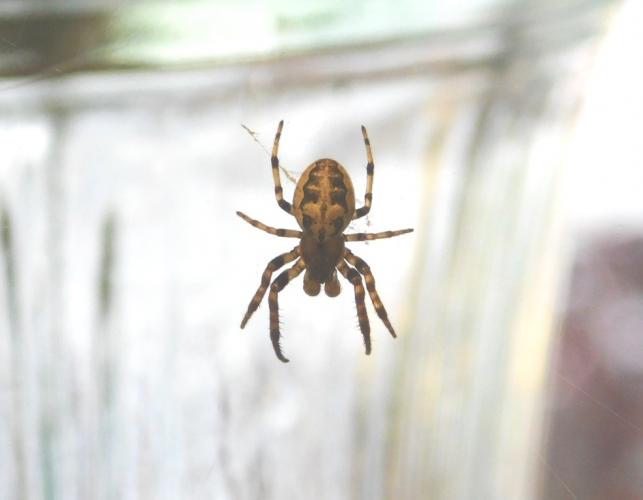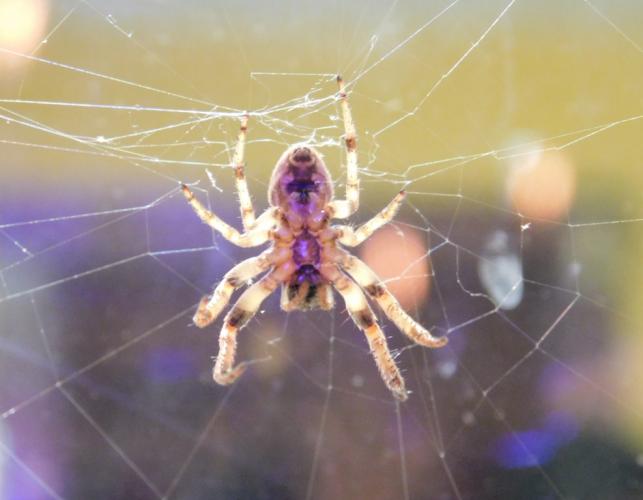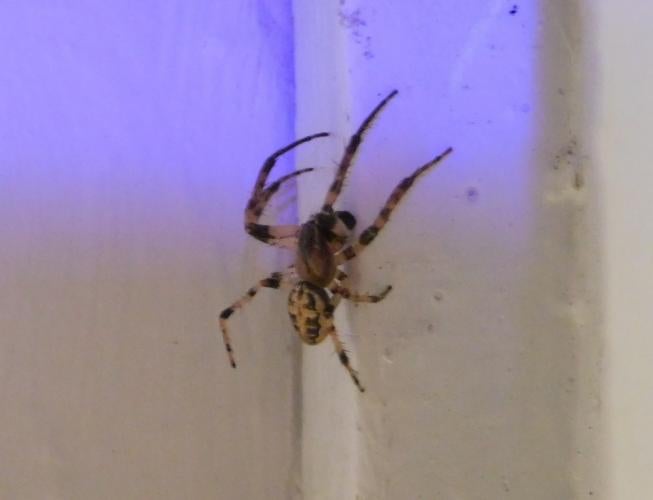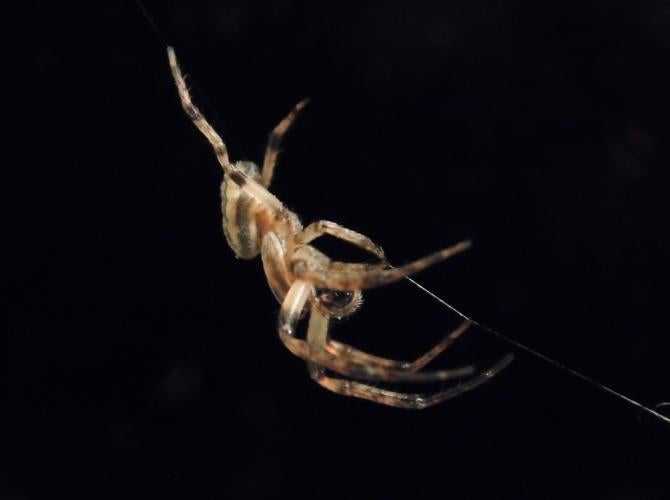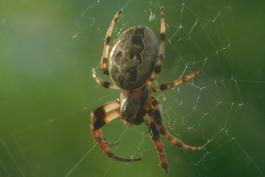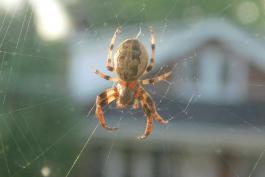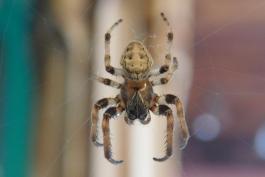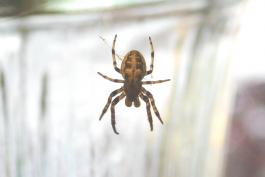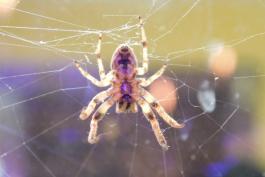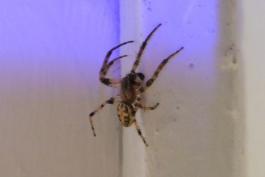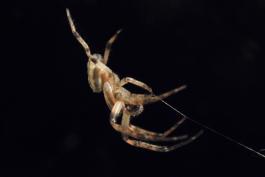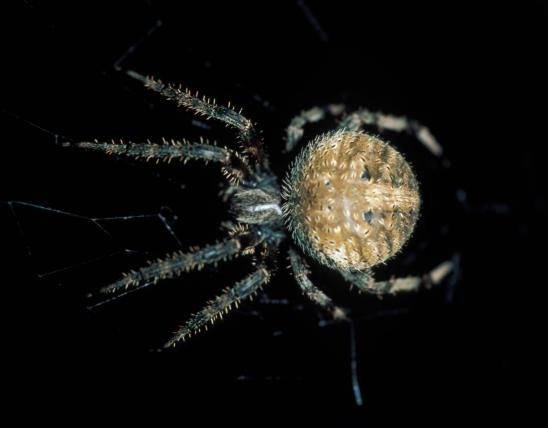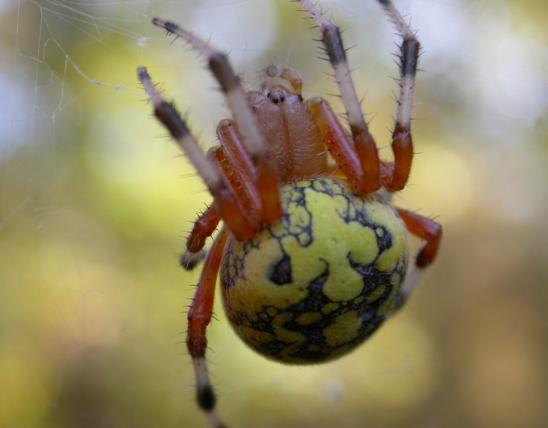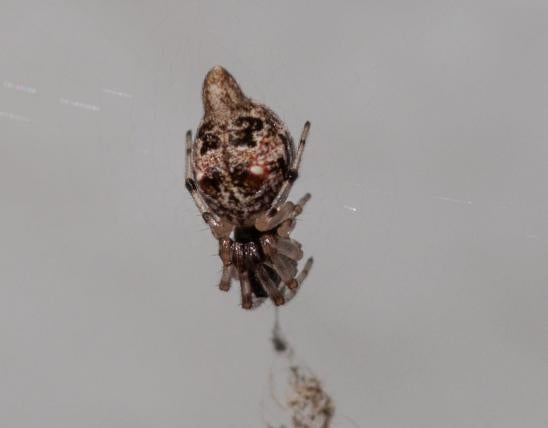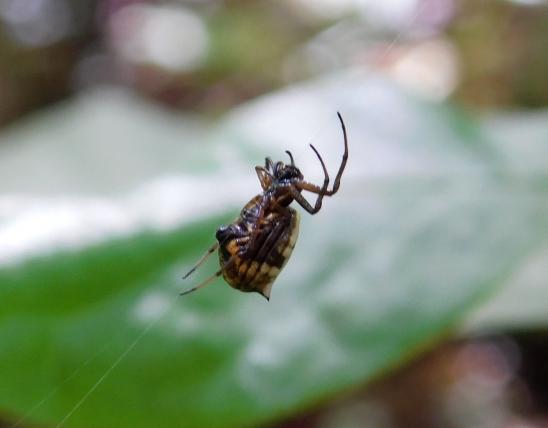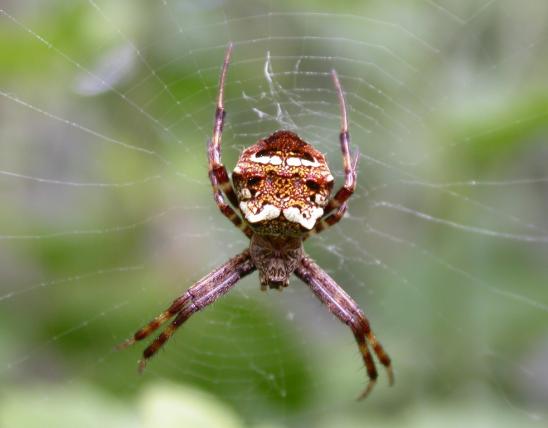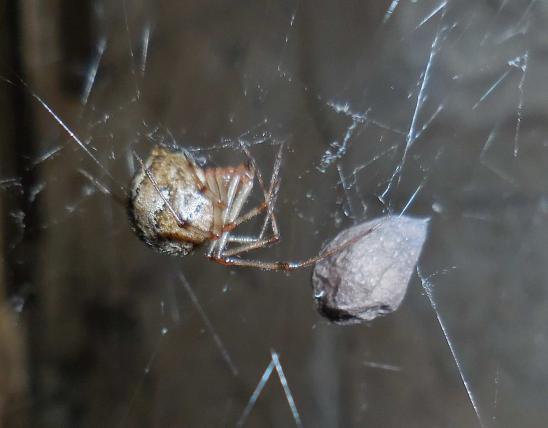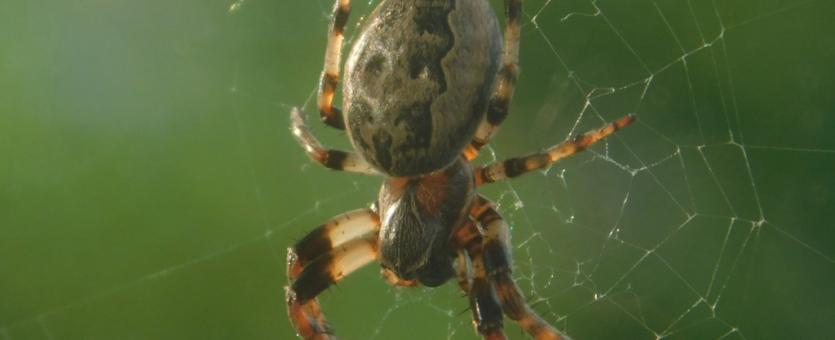
Furrow orbweavers have a tan, brown, grayish, or sometimes reddish or olive abdomen with a dark, zigzag-edged pattern down its length, resembling the furrow made by a plow, or a wavy-edged leaf pattern. The legs are banded and have small spines. The front two pairs of legs are longer than the hind two pairs. The carapace is brown, reddish, or gray and covered with fine hairs; the abdomen is rather smooth and shiny (while many other orbweavers are fuzzy or dull). They are almost always seen in their wheel-shaped (orb) webs. The spiral circles of the web are rather widely spaced (compared to the webs of other orbweavers). The males in this genus are very close to the same size as the females, and have about the same patterning. (In other orbweavers, the size and coloration differences between the sexes is more pronounced.)
Three species occur in Missouri and North America:
Of the three, the furrow orbweaver (L. cornutus) is most common in Missouri. It typically looks shinier than the other two, with comparatively shorter legs. A key ID feature is the absence of a dark band in the middle of the next-to-last segment (metatarsus) of the hindmost pair of legs. Instead, there is only a single dark band, at the farthest end of that segment. Also, the zigzag pattern on the abdomen looks smoother, less jagged, compared to L. patagiatus.
The dusty orbweaver (L. patagiatus) looks duller (less shiny) than L. cornutus. The pattern atop the abdomen is variable and causes confusion, but its zigzags look sharper or more jagged than in L. cornutus. A key ID feature is the presence of a dark band in the middle of the metatarsal segment on the fourth pair of legs.
The gray cross spider (L. sericatus; formerly L. sclopetarius) also has a dark band in the middle of the metatarsus on the hindmost pair of legs. This species is grayer and darker overall, and its carapace is usually edged with white. It also has comparatively longer legs.
Length: bodies usually about ½ inch long (not including legs); males slightly smaller.
Statewide.
Habitat and Conservation
Furrow orbweavers are common in lowlands, in low vegetation near ponds and lakes, and in other moist areas. They often build their webs on or under bridges, below the eaves of homes, under porches, and near porchlights that attract the flying insects they eat. Most people see furrow orbweavers near their homes. The webs are often parallel to a wall or window, built within a few inches of the surface.
Food
Furrow spiders capture a variety of flying insects, including gnats, mosquitoes, damselflies, moths, and more. Although webs are rebuilt or repaired in the late evening, and most insect-snagging is done at night, these spiders often can be seen in their webs during the daytime, too. Otherwise, they spend daytime hiding in a silk-lined crevice near the web.
Status
All three Missouri species have a holarctic distribution, meaning that they occur all around the world in the Northern Hemisphere.
Life Cycle
Males approach the females carefully by plucking delicately on the strands of her web. After mating, the female begins to produce egg sacs, hiding them in cocoons attached to nearby vegetation or in the web. The young hatch in about 3–4 weeks but typically stay inside the cocoon for more weeks until they are mature enough to be on their own. Although most spiders die when freezing temperatures arrive in late fall, this species often survives the winter, so in spring full-sized adult furrow orbweavers may be seen. They can live to be two years old.
Human Connections
Furrow orbweavers help reduce populations of mosquitoes, gnats, flies, and many other insects that pester us. When they reside along the eaves and windows of our homes, they offer a very real line of defense against insects, such as mosquitoes, that may carry serious diseases. Think of them as providers of free, all-natural extermination services.
Ecosystem Connections
Many predators eat these spiders, including birds and wasps. Hummingbirds, warblers, and other birds harvest spider webbing and use it to build their dainty cup nests.
